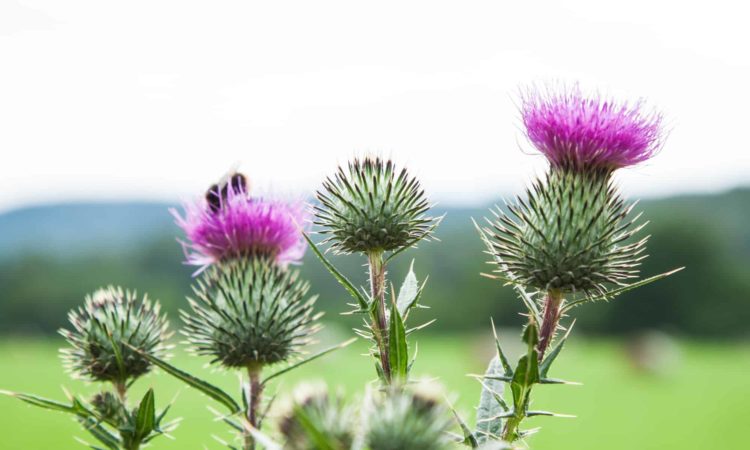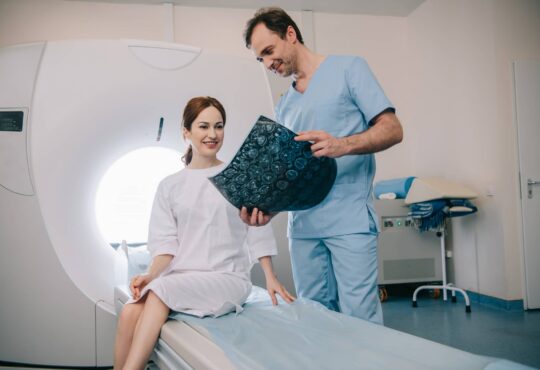The New Threat to Your Liver – and How to Protect Yourself

Not too long ago, if you spoke of someone suffering from cirrhosis, people would snigger – albeit nervously – because it implied the person was an alcoholic.
Alcohol-related cirrhosis of the liver is still a serious problem for many, but you can no longer assume your liver is safe, just because you’re not a heavy drinker.
The most common cause of liver damage is now not alcoholic cirrhosis, but the nonalcoholic fatty liver disease (NAFLD), and it affects an estimated 25% of all Americans.
That’s one in ten children – and one in three adults.
As you can figure from the name, NAFLD is basically having too much fat around your liver – and it can be just as damaging as alcohol.
Your Liver’s Importance
Your liver is a complicated organ that performs a wide variety of functions:
* Regulates chemicals in your blood
* Manufactures bile
* Balances and creates new nutrients
* Produces cholesterol
* Converts poisonous ammonia to urea
* Detoxifies waste materials and dangerous substances
* Manufactures immune factors and clears bacteria from your blood
That’s the shortlist. Losing your liver won’t kill you immediately, like losing your heart will, but as your liver function declines, your body does start dying a slow, painful death caused by accumulating toxins.
Damaging your liver with fat or alcohol is dangerous to your health and longevity.
The Current Risk
Deaths from cirrhosis (all causes) from 1999 to 2016 went up 65%.
Nonalcoholic fatty liver disease is now the biggest cause of liver damage. Drinking alcohol in excess is still dangerous, of course. And so is viral hepatitis.
Fatty compounds accumulate in your liver. Over time, this scars your liver (fibrosis), and your liver becomes inflamed. That can lead to cirrhosis, liver cancer, and outright liver failure.
I once had a supervisor who went from seeing her doctor in late August over abdominal pain to an early November funeral, thanks to liver cancer. (Alcohol, excess fat, or something else? I don’t know. She did smoke, so I’m sure that didn’t help.)
Clearly, the rise of NAFLD as a source of liver damage and death is connected to the obesity epidemic in this country, and that’s true of the rest of the developed world.
The constant ingestion of fats and sugars changes the way your liver metabolizes all that’s coming to it from your intestinal tract. It becomes overwhelmed.
NAFLD Risk Factors
* Obesity – especially with excess belly fat (which is more dangerous than general fat under the rest of your skin)
* High blood pressure
* High cholesterol
* Diabetes
* Sleep apnea
* Being of Asian or Hispanic descent
* Being a postmenopausal woman
Skinny Fat Metabolic Disorder
Obesity is the most obvious sign you probably have NAFLD.
However, an estimated 7% to 10% of people with NAFLD are lean, not overweight. Yet their metabolisms are also out of whack, with high insulin resistance, hypertension, and elevated LDL cholesterol.
Watch Out for Hepatoxic Drugs
Some drugs are poisonous to your liver – hepatotoxins.
Alcohol is the most common, but others include:
* The pain medication acetaminophen (Tylenol being its most common brand name)
* Anticonvulsants such as phenobarbitol and phenytoin
* The antidepressant trazodone
* Anti-cholesterol statins
* The antibiotic tetracycline
* Steroids
At some point, just about everybody has used some of these – and doctors commonly prescribe statins to older patients at risk of heart problems.
Symptoms of Severe Liver Problems
* Yellowish eyes and skin
* Dark urine
* Chronic fatigue
* Loss of appetite
* Swelling in the legs and ankles
* Abdominal swelling and pain
If you’re having such symptoms, you should seek professional medical help immediately.
However, most people with NAFLD and other liver damage aren’t – yet – symptomatic.
What Can You Do?
Despite forty years of research into NAFLD, there are NO prescription medications to treat it.
1. Obviously, stop or at least drastically reduce the consumption of alcohol
2. Lose weight
3. Stop or at least drastically reduce the consumption of fatty foods, oils, and processed sugar
4. Don’t rely on over-the-counter acetaminophen – work with your doctor if you have chronic pain
5. Take the herb milk thistle Silybum marianum (L.) Gaertn
Milk Thistle is Hepaprotective
It’s a tall plant with large, prickly leaves indigenous to Europe, Asia, and northern Africa – and is now grown in the rest of the world. Parts of the plant have been used for medicinal purposes going back to at least 400 B.C.
Studies have shown it protects your liver against many different problems.
The active ingredient is the compound silymarin.
A number of studies have found silymarin reduces fibrosis, enzyme levels, and fat in the livers of patients with NAFLD.
It also improves blood markers in patients with NAFLD and reduces their fasting glucose and LDL cholesterol.
In a study of patients with alcohol-related liver disease, milk thistle extract improved their liver enzymes and pathology.
In clinical trials, milk thistle extract has apparently improved cirrhosis – considered irreversible. In one study, patients with cirrhosis who took milk thistle extract had an overall higher survival rate over four years.
Cautions:
It’s generally safe at the standard dosage of 420 mg per day (divided through the day).
However:
Pregnant or breastfeeding women shouldn’t take milk thistle.
Nor anyone with a history of hormone-related cancers such as breast, uterine, or prostate.
Nor is anyone allergic to such plants as ragweed and daisies.
Take ONLY milk thistle extract. Ironically, milk thistle dried herbs often contain mycotoxins from fungus – and they too damage your liver.
Buy ONLY from a trustworthy, well-established brand name.
https://www.sciencedirect.com/topics/pharmacology-toxicology-and-pharmaceutical-science/hepatotoxin
https://www.niddk.nih.gov/health-information/liver-disease/cirrhosis
https://www.mayoclinic.org/diseases-conditions/nonalcoholic-fatty-liver-disease/symptoms-causes/syc-20354567
https://www.hopkinsmedicine.org/health/conditions-and-diseases/liver-anatomy-and-functions
https://www.lifeextension.com/magazine/2016/5/mediterranean-herb-guards-vital-liver-functions
https://www.mayoclinic.org/diseases-conditions/liver-problems/symptoms-causes/syc-20374502
https://www.drugs.com/npp/milk-thistle.html
https://www.mountsinai.org/health-library/herb/milk-thistle







